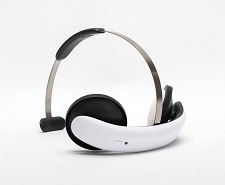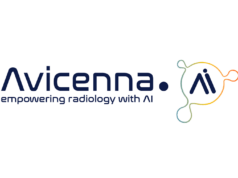
Daniel Månsson (Flow Neuroscience, Malmö, Sweden) outlines the benefits held by transcranial direct-current stimulation (tDCS) in the treatment of depression—and how clinical evidence supporting its use for this and other mental health indications can be expanded even further in the future.
Electricity has had a recurrent role throughout the history of medicine, ever since patients experiencing headache pain in ancient Rome were treated with the remedy of a live fish placed on their forehead.
Whilst the black torpedo fish—which produced electricity—has long since been removed from the recommended list of treatments, the research and use of electricity for a diverse range of conditions has prevailed. Spurring on centuries of research, during the 1950s, 60s and 70s, the first controlled experiments indicating that stimulation via electrical currents could increase cortical activity in the brain were published.
Fast forward past the rise of psychopharmacology, which overshadowed the progression of brain stimulation research during the 1980s and 90s, and the last 20 years have seen the study and application of weak direct-current stimulation delivered transcranially being implicated in the treatment of mental health disorders.
In terms of depression, scientists have since validated across randomised controlled trials that tDCS is as effective as other treatments, is safe to use, and is less expensive than other options, indicating its accessibility.
Current landscape in tDCS
tDCS is now a used and effective practice across a range of disorders including depression, anxiety and chronic pain. So, what exactly is it we are doing? tDCS is a non-invasive, gentle brain stimulation technique that uses direct electrical currents to stimulate specific brain areas. A constant low current (0.5–2mA) passes through two electrodes placed on your head, and this stimulates neural activity in the brain.
There are two types of stimulation with tDCS; anodal and cathodal. The former excites neural activity whilst the latter reduces neural activity. When used to treat depression, tDCS solutions, such as Flow, target the dorsolateral prefrontal cortex—an area involved in higher executive functioning that, when impaired, has been indicated in depression. Alongside this, studies have shown that the positive effects of tDCS last beyond the acute stimulation session and may influence the modulation of serotonergic and dopaminergic systems.
Current research and applications are taking advantage of these findings, with different protocols being developed to dive deeper into the technique, opening up a world of exciting possibilities outside of clinic-only settings. For mental health disorders, we see tDCS used most often in the study and treatment of depression, followed by schizophrenia and addiction. There is also preliminary evidence for the use of tDCS in the treatment of anxiety, post-traumatic stress disorder (PTSD) and anorexia nervosa. A tDCS session is usually 30 minutes, and the recommended protocol follows five tDCS sessions per week during the first three weeks, then two sessions per week as needed. According to the studies, most people notice a reduction of their depressive symptoms within three weeks, which is also what we have seen in the patients who use Flow.
In the long term, we have seen some patients requiring continued stimulation at one or two sessions per week to maintain the reduction in their depressive symptoms, whilst for others, the acute treatment programme suffices. The difference we see with our patients at Flow is furthering our research into alternative treatment protocols to cater to further patient specificity. As we know with mental health, individual expressions play a crucial role in treatment response.
Moving into the home setting
Interestingly, tDCS as a therapeutic option for home use has grown both from clinical demand and the accepted safety of the treatment itself. Within clinical settings, tDCS has shown no serious side-effects or adverse events. Coupled with the fact that the electrical current is very gentle, it seemed to be a no-brainer for the field to optimise this technique as an at-home therapy. In healthcare and mental health, we have seen a rise in patient demand for more accessible and affordable options, which naturally calls for us as clinicians and researchers to innovate traditional methods that have shown efficacy into more autonomous treatments.

Similarly, there is also a healthcare-led demand to have more alternatives to offer patients, which has sparked the development of many digitally led remote solutions in recent years. This was no different for me and my co-founder, Erik Rehn, when we were embarking on Flow Neuroscience, as we could see an excellent therapeutic option to treat depression with tDCS and take this outside of clinic-only settings by implementing the technology into a remote, compact device.
In terms of benefits, at-home mental health therapies can address many of the pain points we see for patients, clinicians and researchers alike. For clinicians and researchers, having a remote, self-administered depression treatment allows for easier-to-administer clinical trials, reduced costs, and increased participation, as people are no longer bound to in-clinic visits. For patients, tDCS provides a non-pharmaceutical option proven to reduce symptoms and accessing this technique via a personal device further enables them to manage their mental health across their lifetime. As a collective, we need to keep pushing towards providing more solutions that can optimise long-term management of mental health disorders—an area where current standard care is underachieving.
Competition in neuromodulation
Compared to other neuromodulation techniques, tDCS is the most malleable for scaling across general populations. If we zoom out to invasive neuromodulation treatments, such as deep brain stimulation (DBS), these produce highly effective results at a patient-specific level but are limited as they are specialised, clinic-based treatments. Despite the positive results with invasive neuromodulation techniques, they are not widely accessible and, due to the insertion of an electrode into specific brain areas, the effects are not necessarily replicable from patient to patient.
An alternative non-invasive stimulation technique is electroconvulsive therapy (ECT). This treatment is used in cases of severe or treatment-resistant depression but, again, is administered in the clinic whilst the patient is under anaesthetic. This type of treatment—whilst non-invasive—uses a current that is 400 times stronger than tDCS and elicits a general seizure of the brain, targeting the temporal cortex at the side of the brain.
ECT can, in addition, incur strong side-effects like memory loss, confusion and pain. These techniques, whilst more widely known, are not as beneficial as tDCS when it comes to patient access, recovery and side-effects. The option of a weaker current that is safe to use at home, and provides an effective treatment whilst having little-to-no side-effects, gives a huge advantage to this type of technique both for patients and clinicians.
Future research in tDCS
However, tDCS has not been without its critics, and there is still progress to be made for it to be a widely prescribed treatment. Firstly, we need to continue research using diverse patient groups and larger sample sizes. Secondly, we need to expand our research into stimulation protocol possibilities to open up further flexibility for clinicians to prescribe and use tDCS safely. Thirdly, there needs to be an increase in the inclusion of remote devices delivering tDCS, such as Flow, in clinical research.
Progress in these areas will develop tDCS into one of the only personalised, accessible and empowering mental health treatments on the market. To further the adoption of at-home tDCS treatments, we also need to place more emphasis on clinicians to use pioneering solutions to support the growing body of research in real-life settings.
As we look towards the future, I am excited, because tDCS, and brain stimulation in general, will push the boundaries for how we treat mental health both in terms of personalisation and accessibility. Despite incredible advances, we still see a heavy focus on pharmaceutical development, with one new antidepressant costing around US$5 billion to produce. And, this just is not good enough. Medication has about a 30–50% efficacy rate, and that is just for those receiving treatment; for many, this is not an option due to side-effects, treatment resistance, or personal reasons. If the only other option we have to offer people is therapy, which, again, has around a 50% efficacy rate for those able to access it—and can take years to produce effects—then we have reached a plateau.
With several decades of solid research into non-invasive brain stimulation, we know that tDCS has the proven effects in altering the activity in the brain to bring symptom relief for patients. At little cost to produce, the ability for the patient to self-administer, and no reliance on medication, tDCS will change how we can scale and treat populations at large. Further personalisation is a much stronger possibility with neuromodulation than either pharmaceuticals or therapy, since it is the modulation of clearly defined structures involved in depression.
Daniel Månsson is a clinical psychologist, and the CEO and co-founder of Flow Neuroscience—a Swedish medical technology company using its tDCS headset device and an artificial intelligence (AI)-powered smartphone app to treat mental health conditions.
The author discloses that they are the CEO and co-founder of Flow Neuroscience.













